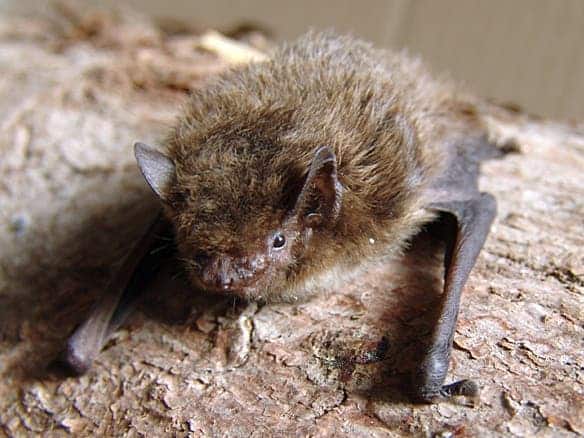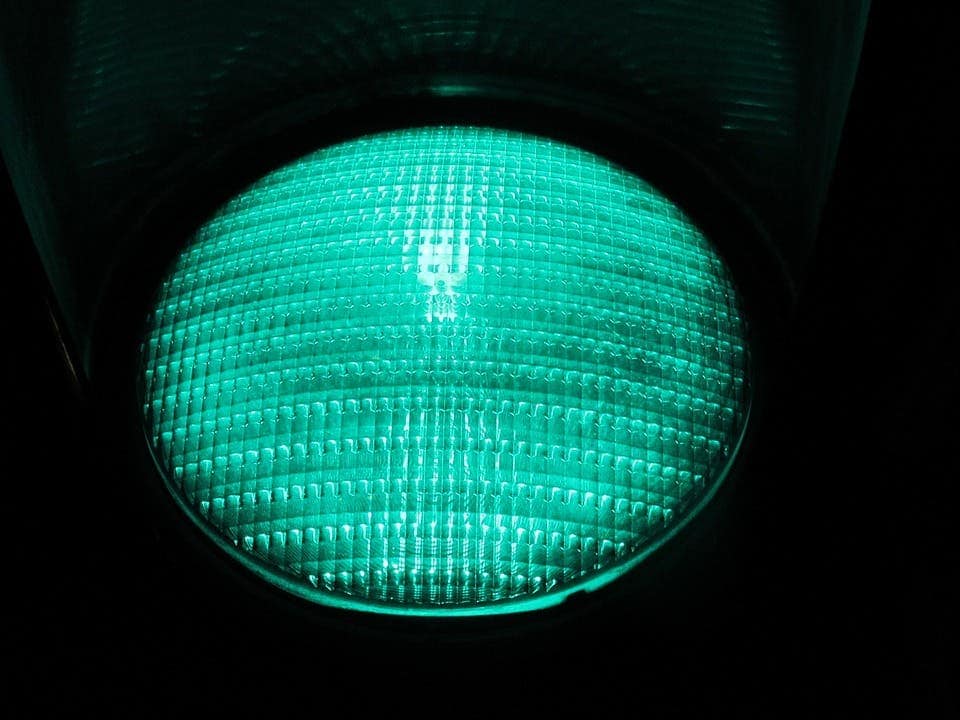“Involuntarily I glanced seaward – and distinguished nothing except a single green light, minute and far away, that might have been the end of a dock.”— The Great Gatsby
The same light that attracted Jay Gatsby’s attention could also attract the attention of migrating bats. Lights at night are becoming very common, but they can interfere with the migration of flying animals. Birds, for example, are sensitive to white and red light. Therefore, it was recommended to swap those lights for blue and green ones. However, it wasn’t known what the effect on migrating bats would be. It turns out that they are attracted directly to green light, and that it interferes with their flight paths.

A group led by Christian Voigt from the Leibniz Institute for Zoo and Wildlife Research studied the effect of green light on two common bat species. The bats, Nathusius’ bats (Pipistrellus nathusii) and Soprano bats (P. pygmaeus), migrate down Latvia’s coast in the fall. Hundreds of thousands of bats migrate through here to reach their wintering sites in Central or South-western Europe.
The researchers erected a pole that had a green light on top in the migration path of the bats. On either side of the light, 23 m away, were two more poles equipped with microphones. During the night, the middle pole emitted 10 minutes of green light, at a wavelength of 520nm, and then 10 minutes of darkness. The researchers recorded and analyzed the bats’ echolocation calls and compared them during light and darkness. The bat species were attracted to the green light, with an increase of 54 percent for Nathusius’ bats and 47 percent for Soprano bats in bat presence when the light was on.

To make sure that the green light was attracting the bats, and not the insects that are attracted by the light, the researchers looked at feeding buzzes. A bat makes a feeding buzz when it approaches prey. In a feeding buzz, echolocation pulses are emitted in rapidly with decreasing pulse intervals and decreasing peak frequencies, letting bats better detect an insect immediately before an attack. The researchers checked to see if the number of feeding buzzes increased when the light was turned on. For Soprano bats, the number of feeding buzzes did not increase during lit periods. However, for Nathusius’ bats it did. Since the light only affected the echolocation of bats up to 23 m away, too far for them to detect insects, it was concluded that the green light was the attractor.
This finding means that green light at night could harm bats by disorienting them, causing them to collide with objects, and wasting their energy. This could prevent them from reaching their migration site. It is known exactly why bats are attracted to green light, it might interfere with their detection of celestial cues or echolocation. Anyways, we know that it’s a bad idea to put green lights in areas where bats are known to fly. On the other hand, a recent study conducted in the Netherlands has found that red light does not affect bats. This information can help make strategies to reduce impacts on bats and other night fliers.
Journal reference: Voigt CC, Roeleke M, Marggraf L, Pētersons G, Voigt-Heucke SL (2017) Migratory bats respond to artificial green light with positive phototaxis. PLOS ONE 12(5): e0177748. https://doi.org/10.1371/journal.pone.0177748


